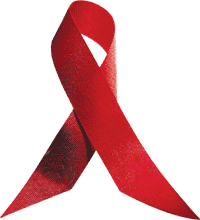 Another year of talk, workshops, seminars and plans. We are spending a lot of money, but HIV infection is on the rise. And for people like me who live with HIV, nothing has changed.
Another year of talk, workshops, seminars and plans. We are spending a lot of money, but HIV infection is on the rise. And for people like me who live with HIV, nothing has changed.
I thought change would do me good, so I dyed my hair blonde. The next day, a journalist asked me if my hair was discoloured because I was HIV positive. Last week, I was stuck in a traffic jam in a taxi under that big 'AIDS Birrudha Ekata' billboard near Maitighar. The driver turned to me and said he felt sorry for Karishma Manandhar because she had AIDS.
Common sense is not as common as we'd like it to be. Who can we blame for such ignorance? Are the HIV sensitisation programs effective? At this rate, can we halt or reverse the epidemic in Nepal by 2015, the UN's target year? One thing we know for sure is that we have to work to implement the national strategy against HIV/AIDS if we are to avoid 15,000 deaths per year by 2005.
A young man, a former drug addict, runs a screen printing business. He has just finished printing AIDS prevention themes on cardholders to be distributed all over the world. This man and his 20 young employees live in a part of town with the highest HIV prevalence among injecting drug users. He doesn't just want the business, he wants to help other young people like him.
In Pokhara recently, I worked with ex-drug users. The 70-member group held daily meetings and planned fund raisers to support rehabilitation. They work with community groups and even have a football team: 'Recovery United'. This is the spirit that will allow them to meet the 'Free by Five' target of a drug-free Pokhara by 2005.
There are an estimated 60,000 people living with HIV/AIDS in Nepal today. According to the UNAIDS estimate, we will enter a generalised epidemic by the end of 2005 as prevalence rates cross one percent of the adult population. This will mark the beginning of a vicious circle of HIV/AIDS and poverty. In two years time, there will be an average of 35 deaths related to AIDS every day and our already overburdened health care services will not be able to cope.
It is time to start thinking of how we can all be a part of the solution to this looming emergency. We all have a personal stake in ensuring that the next generation inherits a future of less suffering and more hope. The answer lies with us.

Rajiv Kafle is an AIDS activist
rajhiv2002@yahoo.com


